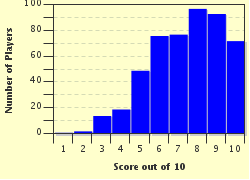Quiz Answer Key and Fun Facts
1. Incredibly, a crude version of toast was around in the Stone Age, and in order to make it, two types of grain were mixed together with a little water, before then being set on top of a hot fire. Which two grains helped make this early version of toast?
2. Around 3000 B.C. the Egyptians were believed to have toasted bread for a reason, other than because they enjoyed eating it. Indeed food historians have long claimed that the Egyptians were trying to slow down which inevitable, natural process?
3. The Romans also toasted their bread, using it to reduce the acidity of which beverage?
4. Keeping in mind the subject of the quiz, what was a medieval trencher?
5. What key ingredient would one have to add to toast in order to make Welsh rarebit?
6. In 1919, one particular invention, which was first patented by an American man named Charles Strite, revolutionised the way in which toast was made. What invention was this?
7. By 1928, toast was given another boost, when another American, Frederick Rohwedder, invented a machine that sliced and wrapped bread.
8. In 2002, English author, Nick Parker, published "Toast: Homage to a Superfood", in which he called the popular breakfast food "the culinary equivalent of" what?
9. Despite its name, technically, French toast is not actually toast- why not?
10. Boiled eggs and toast has long been a popular breakfast with all ages. In the UK, what name is used for the strips of toast used to dip the egg?
Source: Author
poshprice
This quiz was reviewed by FunTrivia editor
ozzz2002 before going online.
Any errors found in FunTrivia content are routinely corrected through our feedback system.

